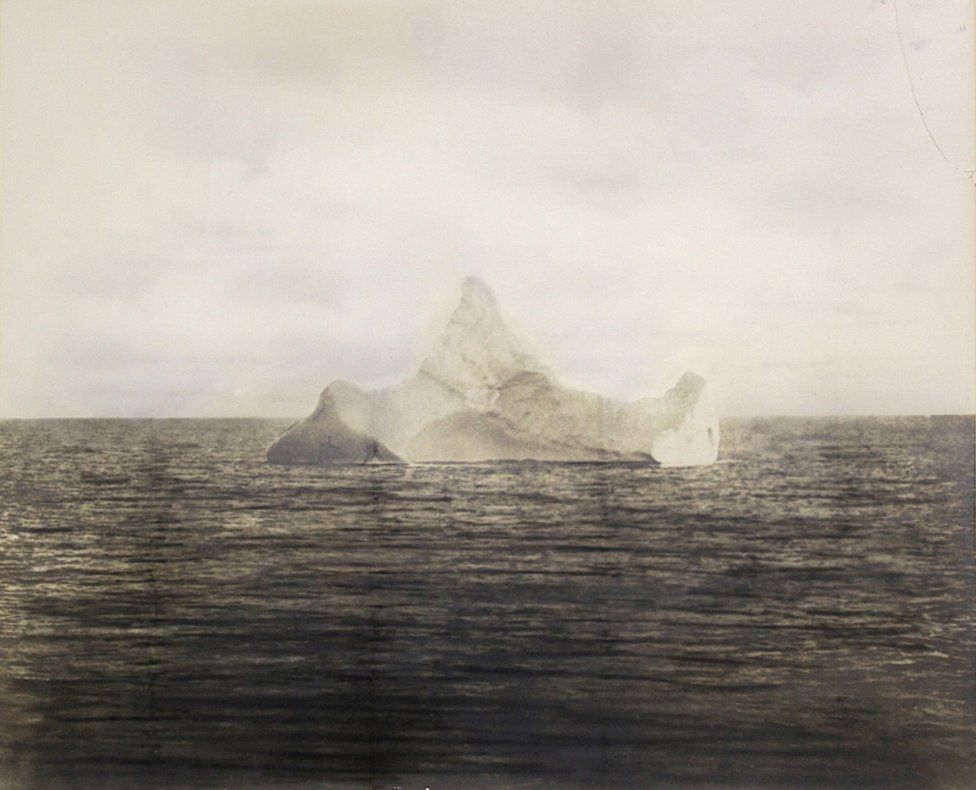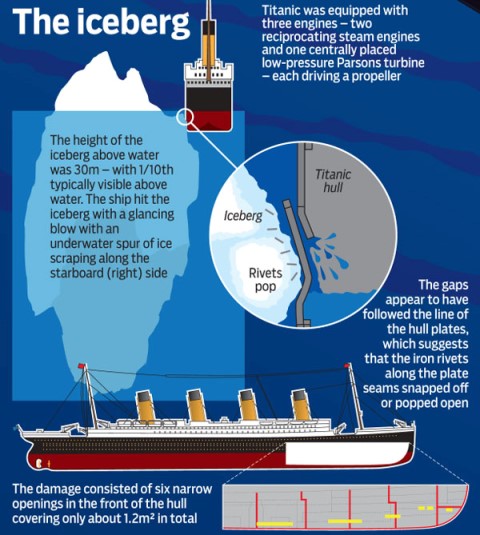

The man reportedly saw a line of red paint along the bottom of the iceberg, believed to be where it touched the Titanic,as confirmed by the iceberg marks, the location, and eyewitness accounts. The impact was described as only a vibration, a slight pause in the movement of the ship, or the sensation of 'rolling over a thousand marbles' as one passenger. In fact, Titanic was so big that the impact was only felt by a fraction of all the people on board. On April 14,1912, the world was shook to its very core when news reached New York City that something completely unthinkable had happened. The iceberg was situated off the coast of Newfoundland, with newspaper reports saying that the iceberg section above the waterline was up to 100 feet high and up to 400 feet long. Nevertheless, the iceberg was too close to be avoided by a ship of Titanic's size. In his new book "Icebergs," Bigg wrote that extensive ice, which traveled much farther south than expected, was widely documented around the time of the Titanic's misfortune.Īmong the most striking images of the disaster was of the iceberg on the morning of the sinking, taken by the liner Prinze Adelbert's chief steward. Others believe that high tides, sunspots, as well as a supermoon that occurred in that fateful year probably dislodged the iceberg.ġ912, too, was also speculated to be a dangerous year at sea. Theory has it that the said icebergs broke away from a glacier back in 1908, when a warmer-temperature winter prompted enhanced ice melting. Bigg estimated that it was likely significantly bigger, or around 1,700 feet long and 75 metric tons in weight. The iceberg, however, had been melting into the water for months prior to the incident. 14, 1912, which killed at least 1,517 individuals, was estimated to be 400 feet in length and 100 feet above the ocean surface, giving it 1.5 metric tons in estimated size. The iceberg that sank the Titanic on Apr.

He revealed that applying those methods to 1912 points to the iceberg emerging from around Qassimiut on the southwest Greenland coast. The iceberg that sank the Titanic on Apin which at least 1 517 people died was estimated to be 400 feet in length and 100 feet above the ocean surface giving it 1.5m tonnes in estimated size."We take what we know about ocean currents, then add in meteorological readings for that year to calculate the prevailing winds," he says in a Sunday Times report. Photo of iceberg that may have sunk the Titanic to be auctioned.What if worlds biggest cruise ship hits ice berg ? | Titanic vs symphony of seas.Titanic Iceberg Collision Mini-Documentary The iceberg modelled to be in the vicinity of the Titanic sinking (Figure 1.4) began life in early autumn 1911 as an iceberg 500 m in length by 300 m in depth.What Happened to the Iceberg After It Sank Titanic?.How long did the iceberg that sank the Titanic last?.Smaller chunks of floating glacially-derived ice are called 'growlers' or 'bergy bits'. An iceberg is a piece of freshwater ice more than 15 m long that has broken off a glacier or an ice shelf and is floating freely in open (salt) water. What was the nature of the damage to the hull from the impact with the iceberg. An iceberg in the Arctic Ocean Icebergs in Greenland as filmed by NASA in 2015. The Titanic sank as a result of slamming into a relatively small iceberg. Is the Titanic bigger than a cruise ship? Why did Titanic sink so quickly (in less than three hours).What would happen if the Titanic never turned?.Could Jack have fit on the door with Rose?.How much did the iceberg weigh that sank Titanic?.Does the iceberg from the Titanic still exist?.Are there still bodies trapped in the Titanic?.

Would Titanic have sunk if it hit the iceberg head on?.Did anyone survive the Titanic by swimming?.



 0 kommentar(er)
0 kommentar(er)
